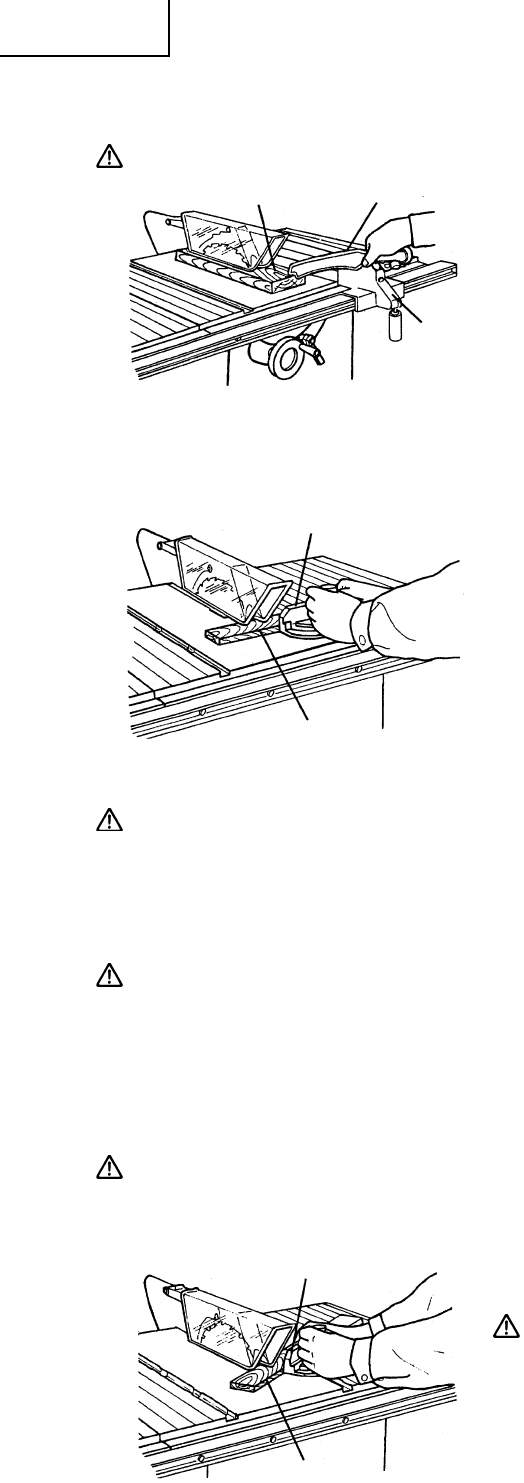
22
English
Workpiece
3. Ripping small pieces
WARNING:It is unsafe to rip small pieces. It is unsafe to put your hands close to the saw blade.
When a small width is to be ripped and the hand cannot be safely
put between the saw blade and rip fence, use one or more push
sticks. Use them to hold the workpiece against the table and rip
fence and push the workpiece fully past the saw blade.
4. Cross Cutting
Confirm the following items before cross cutting.
(1) Remove the rip fence.
(2) Spreader is properly aligned with saw blade.
(3) Anti-kickback pawls are functioning properly (see Fig. 9-d).
Cutting Operation
q Adjust the saw blade height so it is about 1/8" (3.2 mm) above
the top of the workpiece.
w Hold the workpiece firmly against the miter gauge with the
path of the saw blade in line with the desired cut distance.
Keep the workpiece about 1"(25 mm) away from the saw blade.
CAUTION: Keep both hands away from the saw blade and away from the path of the saw blade.
e Turn the switch on and allow the saw blade to come up to speed.
r While keeping the workpiece against the face of the miter gauge, and holding the workpiece flat against
the table, slowly push the workpiece through the saw blade.
CAUTION: Never operate to pull the workpiece back with the saw blade turning. Turn the switch off,
allow the saw blade to complete stop, raise the anti-kickback pawls on each side of the
spreader if necessary and slide the workpiece out.
5. Bevel Ripping
Cross Cutting
This operation is the same as cross cutting except that the bevel angle is set to an angle other than 0°.
WARNING:Only operate with the workpiece and miter gauge on the right side of the table.
6. Mitering
This operation is the same as cross cutting expect that the miter
gauge is locked at an angle other than 90°.
WARNING:Hold the workpiece firmly against the miter
gauge and feed the workpiece slowly into the
saw blade to prevent the workpiece from
moving.
Rip Fence
Fig. 26
Workpiece Push Stick
Fig. 27
Miter Gauge
Fig. 28
Workpiece
Miter Gauge


















